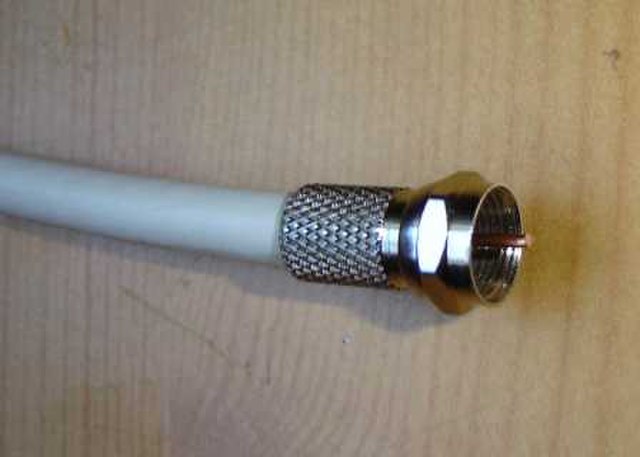A cable television headend is a master facility for receiving television signals for processing and distribution over a cable television system. A headend facility may be staffed or unstaffed and is typically surrounded by some type of security fencing. The building is typically sturdy and purpose-built to provide security, cooling, and easy access for the electronic equipment used to receive and re-transmit video over the local cable infrastructure. One can also find head ends in power-line communication (PLC) substations and Internet communications networks.
Dish antennas for the South Brooklyn headend of Charter Communications (formerly Time Warner Cable)
A standard rack-mount headend
Cable television is a system of delivering television programming to consumers via radio frequency (RF) signals transmitted through coaxial cables, or in more recent systems, light pulses through fibre-optic cables. This contrasts with broadcast television, in which the television signal is transmitted over-the-air by radio waves and received by a television antenna attached to the television; or satellite television, in which the television signal is transmitted over-the-air by radio waves from a communications satellite orbiting the Earth, and received by a satellite dish antenna on the roof. FM radio programming, high-speed Internet, telephone services, and similar non-television services may also be provided through these cables. Analog television was standard in the 20th century, but since the 2000s, cable systems have been upgraded to digital cable operation.
A coaxial cable used to carry cable television onto subscribers' premises
A set-top box, an electronic device which cable subscribers use to connect the cable signal to their television sets. Presented unit is a Cisco RNG200N for QAM digital cable television system used in North America.
A cable television distribution box (left) in the basement of a building in Germany (Kabel BW network, now Vodafone), with a splitter (right) which supplies the signal to separate cables which go to different rooms
Demonstration of a 30-channel cable TV system in the Netherlands in March 1981.






